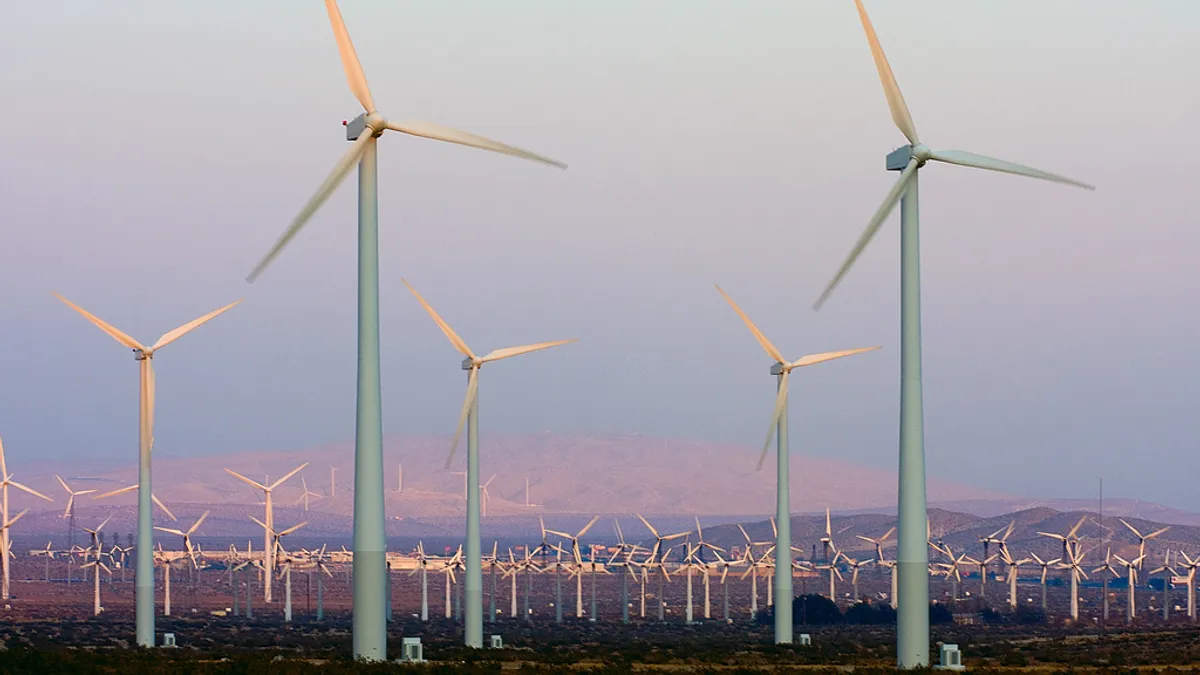Dive Brief:
- The U.S. Bureau of Land Management (BLM) on Monday released for public comment its last environmental analysis of the Chokecherry and Sierra Madre Wind Project in Wyoming after more than a decade of reviews.
- At 2,500 MW to 3,000 MW and up to 1,000 turbines, Chokecherry and Sierra Madre will be the largest wind farm in the United States once completed. Its output would be sent to California through a $3 billion high-voltage transmission line that is still under development.
- The federal approval comes despite President Trump's opposition to wind power and a 2018 BLM rejection of another large-scale wind project.
Dive Insight:
After first applying for state and federal permits in 2008, the Chokecherry and Sierra Madre Wind Project on Oct. 21 received preliminary environmental approval for its second phase of around 400 turbines to be built in Carbon County, Wyoming. The environmental assessment is the third and final BLM analysis needed for the project, according to its developer Power Company of Wyoming.
The project's planned capacity would make it larger than the 1,550-MW Alta Wind Energy Center in California, currently the biggest in the U.S.
BLM issued an environmental assessment for the first phase, consisting of 500 turbines, in January 2017. The site itself has been under construction since 2016. The developer previously expected the project to be completed in 2020, but delays on various federal, state and county permits shifted the date to 2026.
Power Company of Wyoming is an affiliate of The Anschutz Corporation, owned by billionaire Philip Anschutz. Anschutz is also backing the TransWest Express Transmission Project to send Chokecherry and Sierra Madre's energy 730 miles from Wyoming to connect to California's grid. In April, the Wyoming Industrial Siting Council approved the line, completing the federal and state regulatory process needed to begin construction and finish it as early as 2023.
President Trump has been a vocal critic of wind projects for their impact on scenery and bird populations. In November 2018, the BLM rejected an over 200-turbine wind project proposed along the California-Nevada border, saying it could disrupt radar systems and harm the "visual landscape."
The BLM's environmental assessment is still in draft form. A public comment period closes Nov. 4.
One potential hurdle for Chokecherry and Sierra Madre could come if Wyoming places additional taxes on electricity generation. In 2016 Power Company of Wyoming said that a proposal to increase the state's wind production tax would, if implemented, bring the future of the project into question, but state lawmakers ultimately rejected the proposal. This September, however, Wyoming legislators were again discussing drafting bills to tax electricity production, specifically wind.
Correction: A previous version of this story had an incorrect amount for the number of wind turbines in phase one of the Chokecherry and Sierra Madre Wind Project. It is 500.














